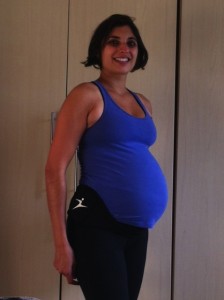Why being flexible isn’t always the aim.
Some people come to us thinking that Pilates is all about the stretch and that they need to be super flexible to be any good at it. Confession, ahem…. whilst we have super flexible people who teach for us and I envy their ability to do the splits I’m not a bendy ballerina.
Whilst I totally can work on my flexibility and improve it, I’m also aware that being super bendy is not always a good thing and you can overstretch for your particular body. Yup, I’m saying it doesn’t always pay to s–t–r–e–t–c–h.
Let’s think about that over-stretching:
- If you are hypermobile or have Ehler-Danos Syndrome then pushing your body past it’s normal range of movement into the hypermobile zone is possible for you but not a good idea. Over time moving out of the normal range can increase your risk of injury, sprains, dislocation, joint pain and can lead to the joints popping out. Pilates is one of the best forms of exercise for these conditions as a good teacher will watch your range of movement and help you work out exactly what you need to strengthen. By strengthening the areas around the hypermobile joint it can help you stay strong.
- The effect of hormones. When you are pregnant and postnatal you definitely do not want to be overstretching. At this point of life your ligaments are laxer and you may have a greater range of movement. But moving too far and stretching too much can lead to your muscles becoming overstretched. This leads to pain/injury for you which can then be an ongoing weakness in your body. Relaxin can take up to 4 months to leave the body after you stop breastfeeding. This can also mean your body is not as strong as you expect it to be. I remember after baby 2 really struggling with some of the harder pilates moves until I stopped breastfeeding (I fed baby until he was 16 month) and then a couple of months later my body was at it’s peak once again. So don’t rush things and risk a lasting weakness.
- If your body is causing a muscle to be tight for a reason. Sometimes the body is protecting itself. Much like we do not work muscles in isolation, it can be detrimental to stretch a muscle in isolation too. Instead we need a whole body approach and to think through why an area is tight. Is it due to a certain posture you adapt most of the time – in which case work on the posture. If it is due to pain elsewhere in your body and you are compensating, then the area of pain needs to be dealt with too.
Anyone can overstretch their bodies. Our collagen make up is genetic and we just aren’t all born with stretchy joints, ligaments and bodies. So whilst stretching is of course good for us, listen to your body.


















